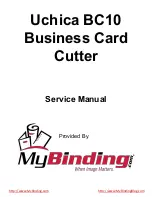
- 32 -
a) The rotational speed of the rotor
Two conditioning rotor speeds are possible :
1000 and 660 rpm.
The change from one speed to the other is
made by simple selection with the lever located
on the central gearbox shield.
It may be necessary to slightly
rotate a cutterbar disc once the
selector lever has been moved
halfway across to complete enga-
gement in the new position.
Recommended adjustments: - 1000 rpm for grasses.
- 660 rpm for lucerne and clover.
b) The position of the conditioning hood
The control lever (1) acts on the conditioning
hood (2) . By lowering the lever (1), the dis-
tance (E) between the rotor and the hood (2)
increases, thus reducing the conditioning
intensity.
On the other hand three articulation points (A
and B) are available in order to adapt the
position of the conditioning hood (2) to the
various working conditions:
A : standard; convenient for the majority of the
cases.
B : for dense crops
The position (B) is to be used when the machine requires too much power. The swaths are then
likely to be wider.
c) The position of the conditioning comb
An adjustable conditioning comb (3) helps to
increase the conditioning intensity. Proceed
as follows:
- Using a box spanner unlock the latch (4).
- Move the lever to extend or retract the
conditioning (3).
- After adjusting, make sure that the latch (4)
is locked in the desired position.
During the season, check that
the conditioning comb does
not clog up. Wash it down to
keep its efficiency.
Summary of Contents for FC 4000 G
Page 1: ...OWNER S OPERATOR S MANUAL FC 4000 R FC 4000 RG FC 4000 G N 95109 C GB 10 2004...
Page 15: ...13 SAFETY DECALS...
Page 57: ...55 MAINTENANCE 2 Hydraulic schematic...
Page 58: ...56 MAINTENANCE ELECTRIC CONNECTORS...
Page 69: ...67 NOTES...
Page 70: ...68...
















































